Last Updated on June 3, 2023 by Ellen
Antigua, Guatemala, is a colorful and colonial small city with cobblestone streets and many cafes with great coffee. If you’re not careful, this city could leave your early retirement budget in ruins.
Backpackers station themselves here for day trips to volcanoes and other hikes in the highlands. Retirees come here to live full-time and learn Spanish. Vacationers stay in fine hotels and dine at expensive restaurants before they have to go back to work.
We aren’t any of those types of travelers. We are location independent early retired budget travelers. We stayed in Antigua for one month on a budget of $2,000, and this is what it was like.
Budget slow travel in Antigua, Guatemala
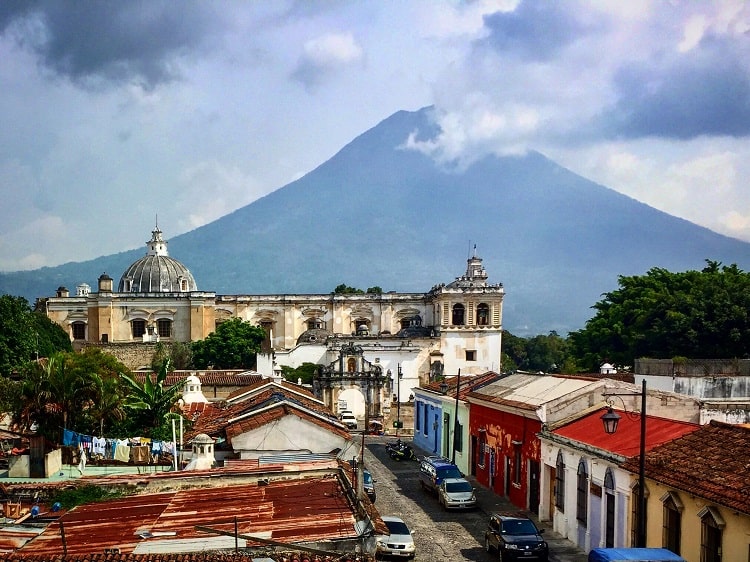
Airbnb apartment
We booked a bungalow on Airbnb. The little house was in a garden setting behind a Spanish school. (We did not attend the school.) All of those facades you see on the street have doors that open up to mini-compounds, houses, restaurants, museums, shops, and more. In our case, our rental was in a mini-compound. There were a few houses behind the school. We enjoyed having a small house in this small city. Our total cost for the rental was $768, which included Airbnb’s fees.
It had great wifi, a small patio, a bedroom (sometimes we are in a studio), a smart TV, every main kitchen appliance to make yourself feel at home. It even had a coffee machine, which often is lacking in Latin American Airbnb rentals. We were glad for the wifi and smart TV because we stayed in June – typically the wettest month in rainy season. It was a comfortable house.
Housing was our greatest expense. It’s not cheap in Antigua to be where the action is. But we wanted a higher elevation to escape the heat and humidity at the beach, so we decided we wouldn’t mind paying a higher price than we normally pay. (Video is at the end of this post.)
Food and drink
We made 90 percent of our food at home. There were two main grocery stores. Bodega Aurera has better prices, but less selection. This is actually owned by Walmart, in case that kind of thing matters to you. The other main supermarket was La Bodegona. Just about everything you can imagine or want or need can be found there – unless you are a super food snob.
Almost all our produce came from the market. It’s an explosion of color and variety; of food and also consumer goods. I even bought a workout bra there. A few price examples: avocados were three for a dollar; two pounds of tomatoes were about $1.30; two pounds of strawberries were about $1.30; a giant head of broccoli, also about $1.30. We brought reusable bags to cut down on plastic bag use. Note – make sure you disinfect your veggies!
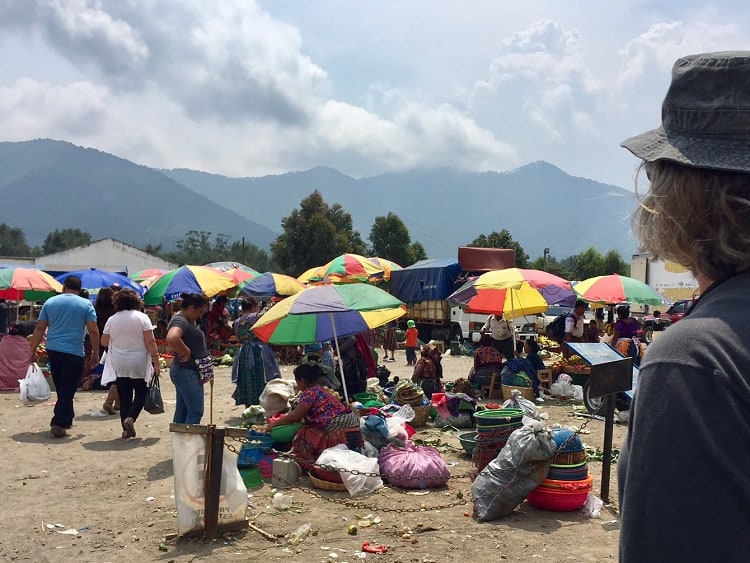
We tried several restaurants – mostly for coffee or small bites. For happy hour, we liked the tasty appetizer sampler and the view of the cathedral ruins at Tartines, but go early because there are only four tables with unobstructed views of the ruins. We liked the large, tasty plates of food (with many vegetarian options) at Toko Baru, which were fairly cheap. I previously wrote about three cool rooftop cafes.
My spouse Tedly bemoaned the higher price of beer. In Antigua (and other areas of Guatemala), the minimum cost was about a dollar for regular can. That’s at least double the cost of beer in Mexico. This is important because beer is always a part of the budget!
The big takeaway about eating out is that we found restaurants and cafes in the tourist areas charge prices comparable to what middle-class prices are like in the U.S. And just about all of Antigua is a tourist area.
Antigua’s ruins
Ruins are all over the city. Some date back to the 16th Century. Some ruins have beams holding up concrete and brick, yet visitors are still allowed to roam around sites. Such explorations wouldn’t be possible in the highly litigious U.S.
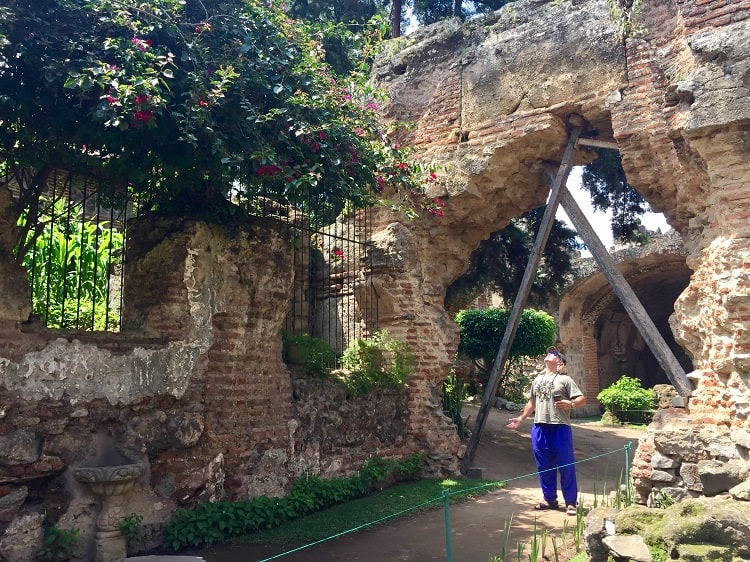
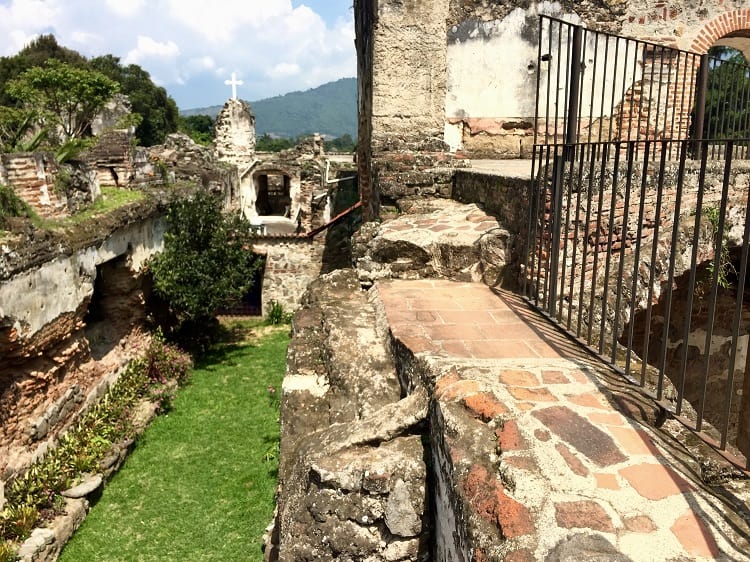
Church ruins that are cheap to stroll through are Iglesia de San Francisco El Grande ($1) and Antigua Guatemala Cathedral (less than $1). I liked these for their special history to Antigua and for the spaciousness. My favorite was San Francisco because of the Peter of Saint Joseph Betancur. (No pictures of his shrine or museum, only the adjacent ruins outside.)
There are other churches to explore, such as the imposing facade of El Carmen and Antigua’s famed Iglesia de La Merced (the yellow church) with its nearby archway. You could spend endless hours roaming the city’s ruins.
Earthquakes during budget slow travel in Antigua
Some churches here have been so damaged by earthquakes they are no longer in use. Earthquakes caused the country to move its capital from Antigua to Guatemala City centuries ago.
We felt two unusually strong earthquakes during our month-long stay – one was a 6.9 and the other was a 6.8. They were the largest earthquakes in the western hemisphere the first half of 2017. Luckily, there was only minor damage in Antigua, just some bricks and concrete that had shaken loose.

There are also several smaller quakes that you may not even feel. Overall, earthquakes are a real danger – and they are common. There are few buildings in Antigua higher than two stories and after earthquakes, everyone is out checking for any damage.
The two earthquakes we felt were powerful enough to move our bed in the middle of the night. Kind of a freaky experience that the locals simply take in stride.
Volcano hikes and pleasant walks
Antigua is near active volcanoes. If the wind is right and an eruption strong enough from the Fuego volcano, sometimes a fine layer of light gray ash will cover things outside, like cars. Fuego is currently the most active volcano in the country. Its higher, dormant twin is Acatenango.
On clear days, there is a good view of both volcanoes from the Tanque La Union park, which was one block from our Airbnb apartment. (You can also see the Agua volcano from here. It’s closer and to the left of these volcanoes.)
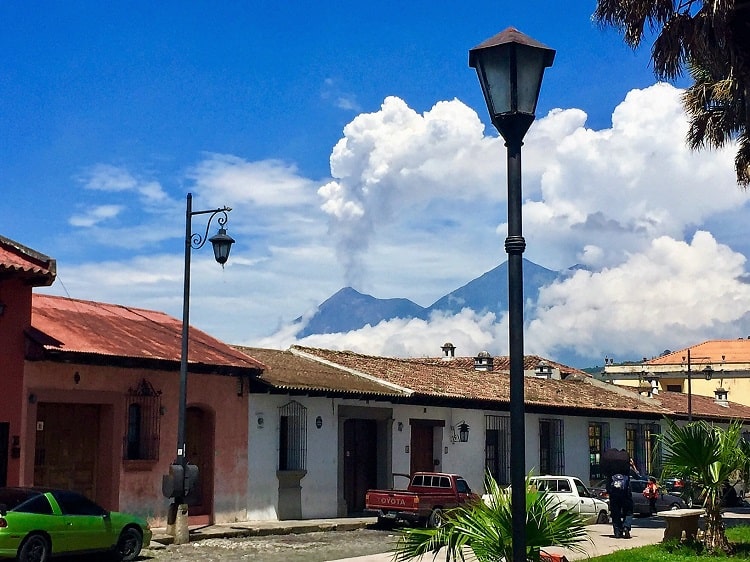
Tour groups hike up Acatenango on overnight trips to see Fuego’s lava and ash and smoke. Acatenango is higher than Fuego, so tourists can look down at Fuego’s show for a safe distance on the twin volcano.
It’s usually a two-day trip: a five hour hike up, and then several hours back down the next day. (Some people do it in one long day.) This was a difficult hike for me, but it was so worth it! Read a separate entry on that here. People also can hike the ridge that connects the two volcanoes on a related tour.
We also hiked up – Pacaya – another nearby active volcano. You cannot see this one from Antigua. It’s about an hour drive from the city. Tour groups can only go so far up Pacaya because there was a surprise eruption a few years. It left a lava field that is still hot – two years later! A guide can lead you up the trail to that field on this six-to-seven hour half-day trip. Read about that experience here.
Dormant Volcan de Agua is the largest volcano you see from all over Antigua. It’s the closest one to the city. It makes for impressive scenes all over town, including many streets, parks, and from Cross Hill.
If you’re not into volcano hikes, Cross Hill is an easy walk that leads to a vista where you can see massive Agua against the Antigua valley.
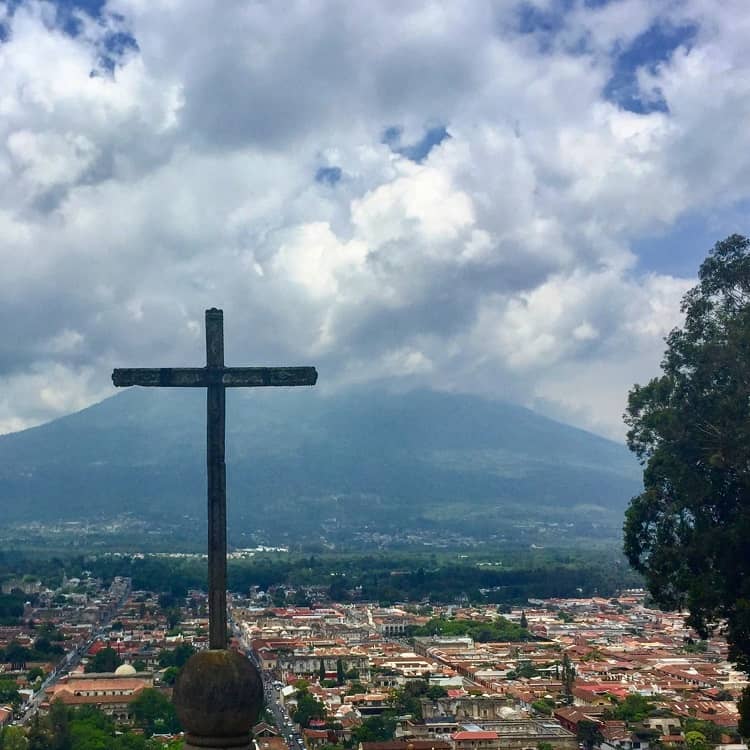
Another hiking experience that was cheap and pleasant for us was an uncommon, easy route called the Heart of Agua. It’s not a volcano hike, just a regular hike at higher elevations. You have to get to the trail head by car or public transportation, but I liked this because we had it all to ourselves. Read about that experience here.
More attractions and activities
We rented a car once during our stay to drive to Monterrico on the Pacific Coast – the blackest beach we’ve ever seen. The sand was darker than on beaches in Nicaragua and Costa Rica. The rental car only cost $40 for 24 hours. Read about that day trip to the beach here.
The main square in Antigua is a free and fun activity. It’s a park across from the main cathedral that’s great for spending hours people watching. There are several benches to sit (watch out for the birds overhead). On the end near the main cathedral there is a fountain popular with tourists for photos.
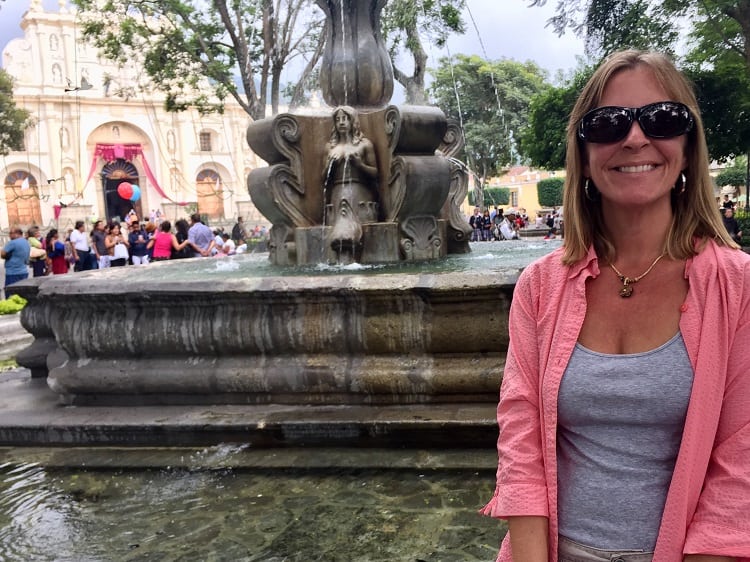
There are a number of cafes and restaurants all around the square. Vendors try to sell tourists everything from scarves to belts to selfie sticks.
I also recommend the Museum Walk. It’s reasonably priced and fun. There are several museums and some art galleries and restaurants connected to what’s considered by many to be the finest hotel in Antigua. Read about that outing here.
There are also “museums” geared to tourists – chocolate and jade and Mayan clothing, etc. Most look more like storefronts with items to buy, if you have room in your budget or your bags for stuff like that. We skipped these attractions, but they seemed to be popular with families – especially on rainy afternoons.
Because of the rainy season, and because of the uneven cobblestone streets and sidewalks, I didn’t jog outside. Instead, I joined a gym.
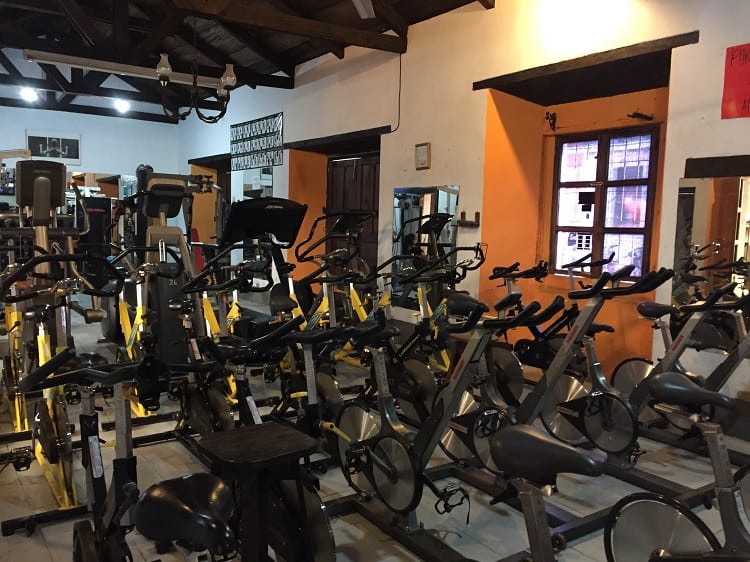
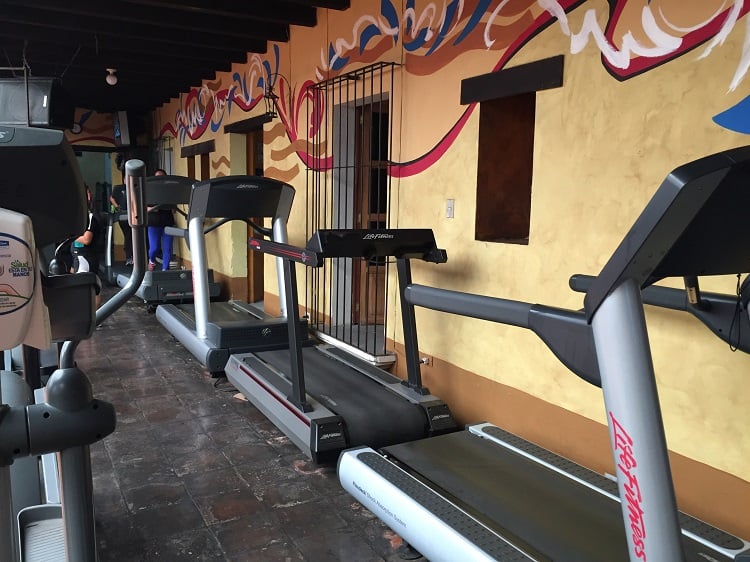
There are a few gyms in the city, and I chose Antigua’s Gym because it had the best most recent reviews online. It cost me $43 for the month. Seven dollars of that was a one-time registration fee. The gym has several treadmills, CrossRamps, spinning machines, weight machines, free weights, exercise balls, and more. For the price of my admission, they threw in a tank top with the gym’s logo.
The hours really worked for me. It was open at 5:00 a.m. weekdays, 7:00 a.m. Saturdays, 9:00 a.m. Sundays. Antigua’s Gym website is here.
Lives of locals
There were several processions around town while we were in Antigua, complete with the fireworks before and after the parade. (It seems to be a Latin America pastime – blowing up fireworks.) Once we saw a pet parade, and several times we saw religious-themed parades, angels included.

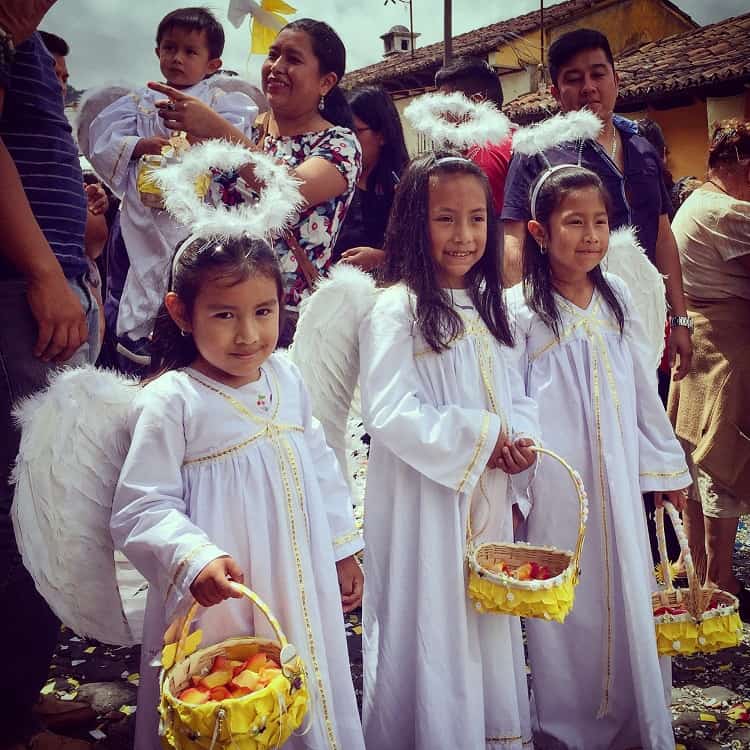
There always seemed to be a reason to celebrate in Antigua, and we could totally get down with that!
Almost every morning I walked several blocks to the gym, and on most mornings the skies were clear enough to see all three volcanoes before the afternoon rain moved in. I saw the same people each morning. Shopkeepers opening up. Vendors setting up their baskets of bread and fruit at the park I passed by every day. Neighborhood elderly folks watching the scene. Adults off to work. Children and teens on their way to school.
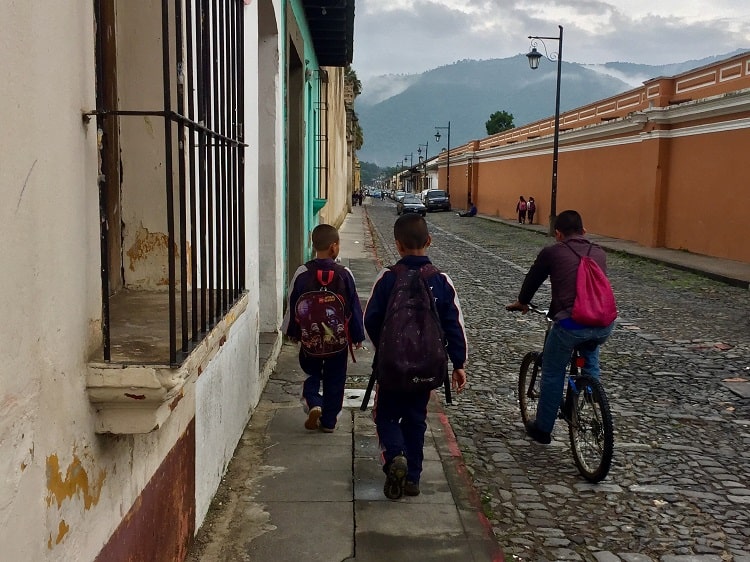
There is something about developing a rhythm in slow travel lifestyle that is peaceful and beautiful to me. I like that the same workers are at the gym each morning and they greet me every day. I like that I say buenos dias to the same people I pass on the street every day. I smile at everyone. My soul says to them, hey, we are the same. Their faces soften and relax. They smile and greet me back. Antigua is a city – so it’s not like people are yelling my name like they did on my jogs in the sleepy beach village of Mahahual, Mexico: Elena – Elena – buenos dias! I miss Mahahual. Part of me will miss Antigua, too.
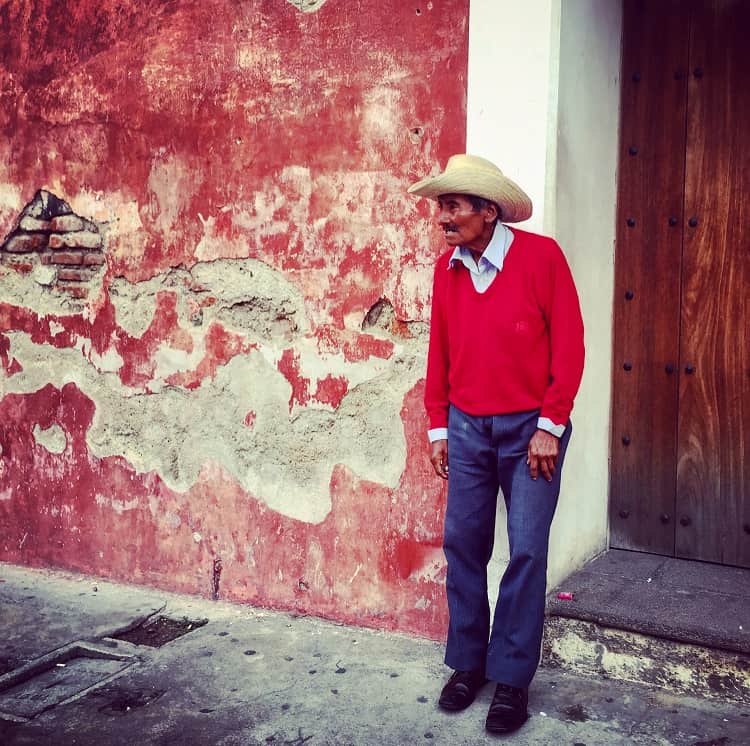
Our next slow travel stop is in San Cristobal, Mexico. There, I’ll develop a new routine, in a new city and country, with new people to observe, and to learn from.
Thanks for reading, “Volcanoes, earthquakes, ruins: Early retired life in Antigua, Guatemala.”
More global adventures:
- Budget travel in Rome: 6 ways to save money
- Activity guide for budget travelers in Porto, Portugal
- 3 budget things to do in Marrakesh, Morocco
